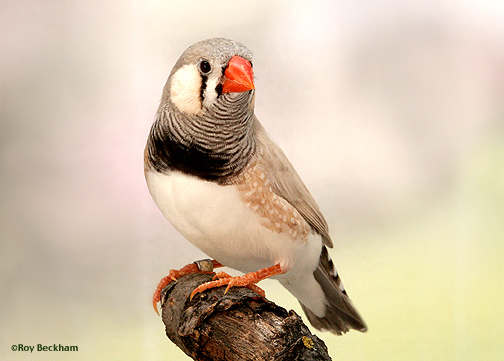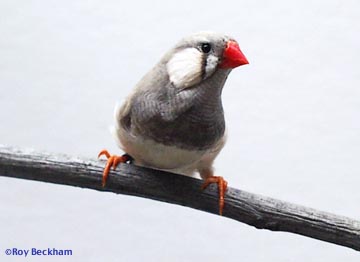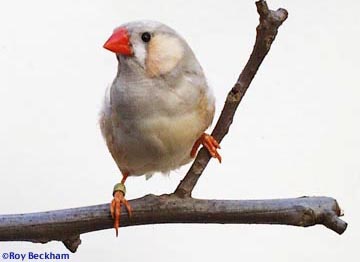




 |
|
|||||||||||||||||||||
 |
|
|
|
|
|
|
|
|
|
|||||||||||||
|
|
|
|
|
|
||||||||||||||||||
|
|
|
|
|
|
|
|
|
|
||||||||||||||
|
|
|
|
|
|
||||||||||||||||||
|
|
|
|
|
|
|
|
|
|
||||||||||||||
|
|
|
|
|
|
||||||||||||||||||
|
|
|
|
|
|
|
 |
|
|||||||||||||||
 |
 |
|
||||||||||||||||||||
|
|
|
|
||||||||||||||||||||
|
|
|
|
|
|
|
|
|
|
|
|
|
|
|
|
|
|
|
|
|
|
|
|
| Dominant Silver Zebra Finch | ||||
 |
||||
| Dominant Silver Lightback male. A popular combination. | ||||
|
Mutation Effects Male: The Dominant Silver causes a dilution of all markings the markings, both orange and black as well as the base color. The amount of dilution varies. Cheek patches can vary from nearly white to almost full orange. Female: Like the male, the base color and all markings are diluted. The amount varies. Fledgling: Dominant Silver chicks can be identified as soon as they feather out in the nest. They will have diluted feathers. They also have horn-colored beaks. Combinations Since Dominant Silver is a dilute mutation, it is best not to combine it with other mutations that cause a further dilution of the colors (the Lightback is the only exception, see above). This means it should not be combined with CFW (see note below), Fawn Cheek, Florida Fancy, Recessive Silver and White. Other mutations that should be avoided in combination with Dominant Silver include those mutations that require contrasts to be appealing and include Pied and Penguin. Dominant Cream - A Dominant Silver + Fawn combination (click to view)
Notes Dominant Silvers, especially the darker versions, are often plagued by a blotchy appearance to the back color rather than the preferred smooth, even dilution. In an effort to smooth out that color, some breeders have tried mating DS with CFWs. This causes a further dilution of the base color. Whether or not this works I cannot say. The disadvantage being any CFWs produced will likely show some dilution which is not desirable and repeated matings to CFW may cause too much dilution in the Dominant Silvers. It is believed that the double factor Dominant Silver is a lethal. That is to say that if an egg were to receive the Silver gene from both its parents, it would not hatch but die in the shell. I am not aware of any advantages to breeding a Dominant Silver to a Dominant Silver. Most breeders rely on a Dilute x Normal mating to produce more Dominant Silvers. |


Dominant Silver males. Dark version with light cheeks (left). Light version with cream cheeks (right).
